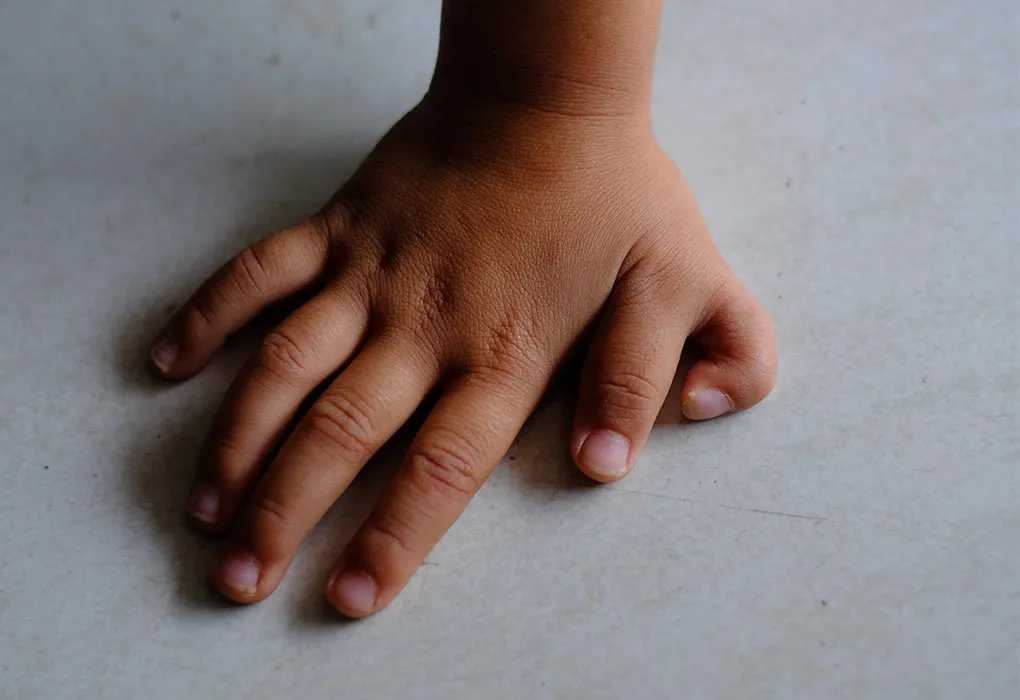Polydactyly is the condition where a baby is born with extra fingers or toes. This issue tends to run in families. It may also result from genetic mutations or environmental causes. The usual treatment is surgery to remove the extra digit.
What is Polydactyly?
Polydactyly is the medical term for being born with extra fingers or toes. It’s one of the most common birth defects that affects babies’ hands and feet. The treatment of polydactyly depends on the location of your child’s extra finger or toe.
Polydactyly types
Polydactyly is clarified by the location the extra digit is located, these types include:
Preaxial (radial/tibial) polydactyly: An extra thumb or big toe.
Central polydactyly: An extra finger or toe near the middle digits (between the index, middle, or ring fingers or any of the toes that aren’t the big or pinkie toe).
Postaxial (ulnar/fibular) polydactyly: An extra pinkie finger or toe.

What causes polydactyly?
Polydactyly is caused by a genetic mutation or disruption during the baby’s development. Since this situation is hereditary, if the parents have the genes, there’s a possibility for their child to be born with extra digits. If something affects the genes that are responsible for developing your baby’s limbs, hands, and feet, there’s a chance they might be born with polydactyly.
How is polydactyly treated?
The treatment for polydactyly is to remove the extra digit, which depends on the location of the extra finger or toe.
Surgical ligature
If the extra finger is on the hand, your child may only need what’s known as a surgical ligature. For this, a tight string or band is tied around the base of the extra finger cutting off the blood supply. A week or two later, the extra finger will fall off. This process won’t hurt your baby or endanger blood flow to their other fingers or the rest of their body. This method is used for extra fingers without any bone or connective tissue development.
In-office excision
Your provider might remove your baby’s extra digit during an office visit. For this, the skin around the extra finger or toe will be numbed with an injection. Then a cautery device is used to remove the extra digit. In-office excision is only an option if the extra digit isn’t connected to the rest of your baby’s hand or foot by bones.
Polydactyly surgery
In cases where patients aren’t good candidates for the previous methods or if the extra digit is on the feet, patients will need removal surgery. What type of surgery your child will need depends on which type of polydactyly they have and how developed the extra digit is. Your provider might not recommend surgery to remove an extra digit until your baby is around a year old.

Can polydactyly be prevented?
Genetic conditions that can cause polydactyly can’t be prevented during pregnancy. Environmental factors with can cause such conditions are linked to:
Alcohol drinking
Smoking or using tobacco products
Using recreation drugs
Talk to your provider about what you should avoid eating, drinking, or doing while you’re pregnant.
Conclusion
Polydactyly is a congenital condition that results in an individual being born with more than the usual number of fingers or toes. This condition primarily arises due to genetic mutations, which can either be inherited or occur spontaneously. The development of an extra cleft during the formation of hands and feet in the embryonic stage leads to the creation of an additional finger or toe. Treatment for Polydactyly usually involves the removal of the extra digit in early childhood, with the aim of providing the child with a functional and aesthetically typical hand or foot. The specific treatment method depends on the location and bone attachment of the extra digit. Despite the challenges it presents, with appropriate treatment, individuals with Polydactyly can lead normal and healthy lives.